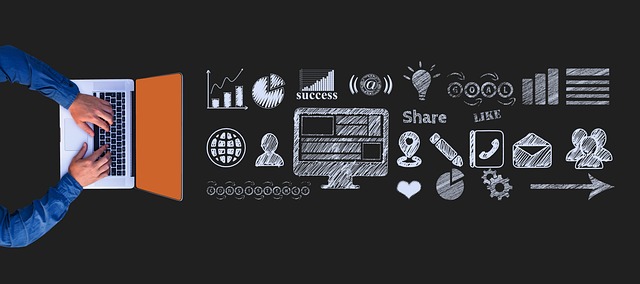AI ghost kitchen mobile apps are revolutionizing food delivery by leveraging advanced technologies, including AI heat map tools for delivery demand, to optimize operations and enhance customer experiences. These apps combine real-time data like traffic, weather, and historical delivery data to predict demand, enabling efficient resource management, minimized wait times, and better inventory planning. AI engines streamline logistics, provide data-driven insights, and enable dynamic pricing strategies, ultimately boosting revenue optimization and customer satisfaction. Despite challenges, strategic partnerships can make AI a critical component in food delivery logistics, ensuring precise insights through AI heat map tools for delivery demand.
“Unveiling the future of food delivery, this article delves into the transformative power of AI ghost kitchen mobile app integration engines. In today’s fast-paced culinary landscape, understanding and optimizing delivery demand is paramount. We explore how AI heat map tools are revolutionizing logistics, enhancing efficiency, and shaping consumer experiences. By examining the benefits and challenges of implementing AI in food delivery, we provide insights into the potential for improved demand forecasting and optimized routes, ultimately elevating the industry.”
- Understanding AI Ghost Kitchen Mobile Apps and Their Integration
- The Role of AI Heat Map Tools in Optimizing Delivery Demand
- Benefits and Challenges of Implementing AI in Food Delivery Logistics
Understanding AI Ghost Kitchen Mobile Apps and Their Integration

AI ghost kitchen mobile apps are transforming the food delivery landscape, leveraging advanced technologies to optimize operations and enhance customer experiences. These applications use AI integration engines that combine various data points, such as real-time traffic patterns, weather forecasts, and historical delivery data, to predict demand and optimize delivery routes. By analyzing this data, AI heat map tools for delivery demand can identify peak periods and popular food choices, enabling efficient kitchen management and timely deliveries.
This intelligent approach ensures that ghost kitchens allocate resources effectively, minimizing wait times and enhancing customer satisfaction. Moreover, it allows for better inventory management, as restaurants can anticipate menu items with high demand, reducing waste. The integration of AI engines in ghost kitchen apps is a game-changer, offering data-driven insights to streamline logistics and contribute to the overall success of food delivery businesses.
The Role of AI Heat Map Tools in Optimizing Delivery Demand

AI heat map tools play a pivotal role in optimizing delivery demand for ghost kitchen mobile apps. By analyzing historical data and real-time trends, these tools can identify popular areas where customers are most likely to place orders, allowing restaurants and delivery services to strategically locate their kitchens. This precise understanding of consumer behavior helps in making informed decisions about kitchen placement, ensuring that supply meets demand efficiently without over-saturating less popular zones.
Moreover, AI heat maps enable dynamic pricing and marketing strategies. During peak hours or in high-demand areas, restaurants can adjust menu prices accordingly, maximizing profits while offering competitive rates in less busy locations. This data-driven approach not only optimizes revenue but also enhances customer satisfaction by providing timely, relevant, and personalized offers based on their location and preferences.
Benefits and Challenges of Implementing AI in Food Delivery Logistics

Implementing Artificial Intelligence (AI) in food delivery logistics brings a host of benefits, revolutionizing how ghost kitchens and delivery engines operate. AI heat map tools for delivery demand offer precise insights into customer preferences and peak ordering times, enabling optimized staffing and kitchen resource allocation. By analyzing historical data, these tools predict demand patterns, ensuring efficient menu planning and minimizing waste. Furthermore, AI algorithms can automate route optimization, reducing delivery times and improving customer satisfaction.
However, challenges exist in this integration. Data privacy and security are paramount concerns as AI relies on vast amounts of customer information. Ensuring the secure handling and storage of such data is crucial to maintaining user trust. Additionally, the initial setup costs for AI implementation can be steep, requiring significant investment in technology and training. Yet, these challenges can be overcome with careful planning and strategic partnerships, paving the way for AI to become an indispensable asset in streamlining food delivery logistics.
AI ghost kitchen mobile apps, powered by integration engines, are transforming food delivery logistics. By leveraging AI heat map tools for delivery demand, these platforms optimize routes and enhance efficiency. While challenges exist, the benefits of implementing AI in food delivery logistics, such as reduced costs and improved customer satisfaction, make it a promising game-changer in the industry. As we navigate this evolving landscape, AI integration will continue to play a crucial role in shaping the future of efficient and effective food delivery services.
